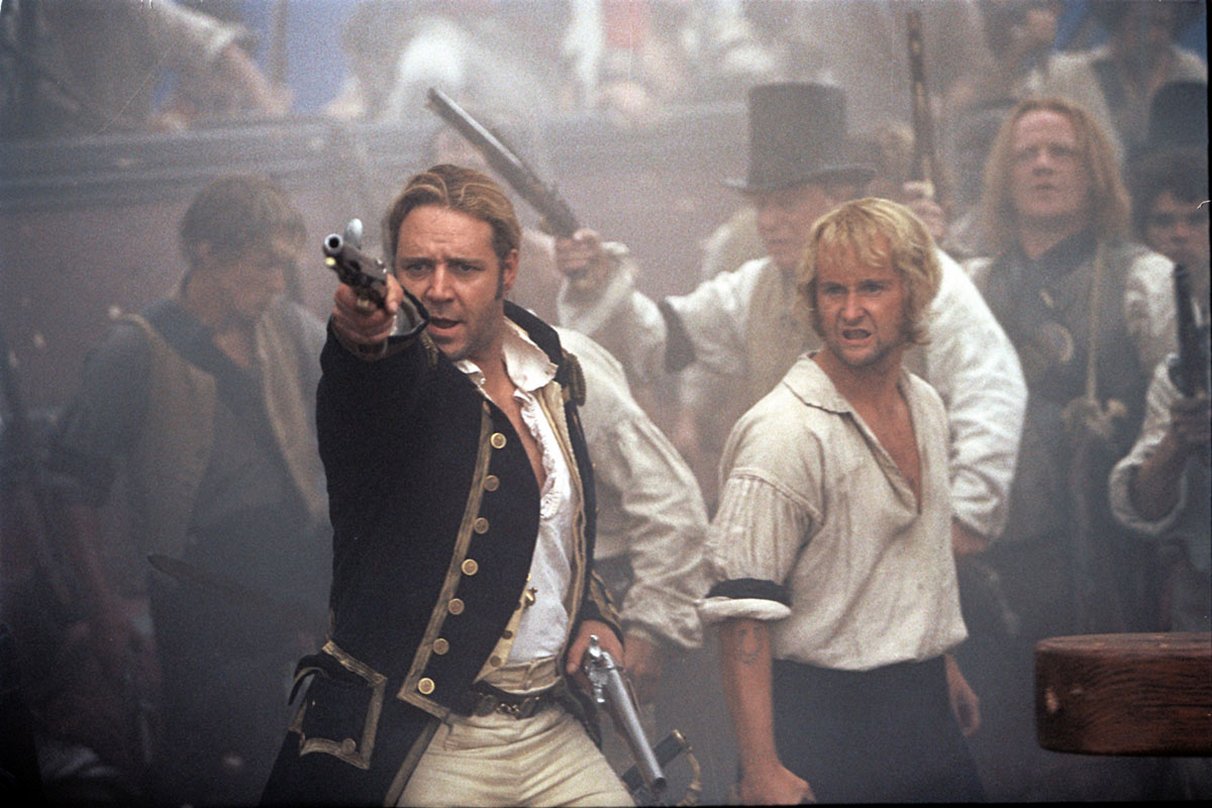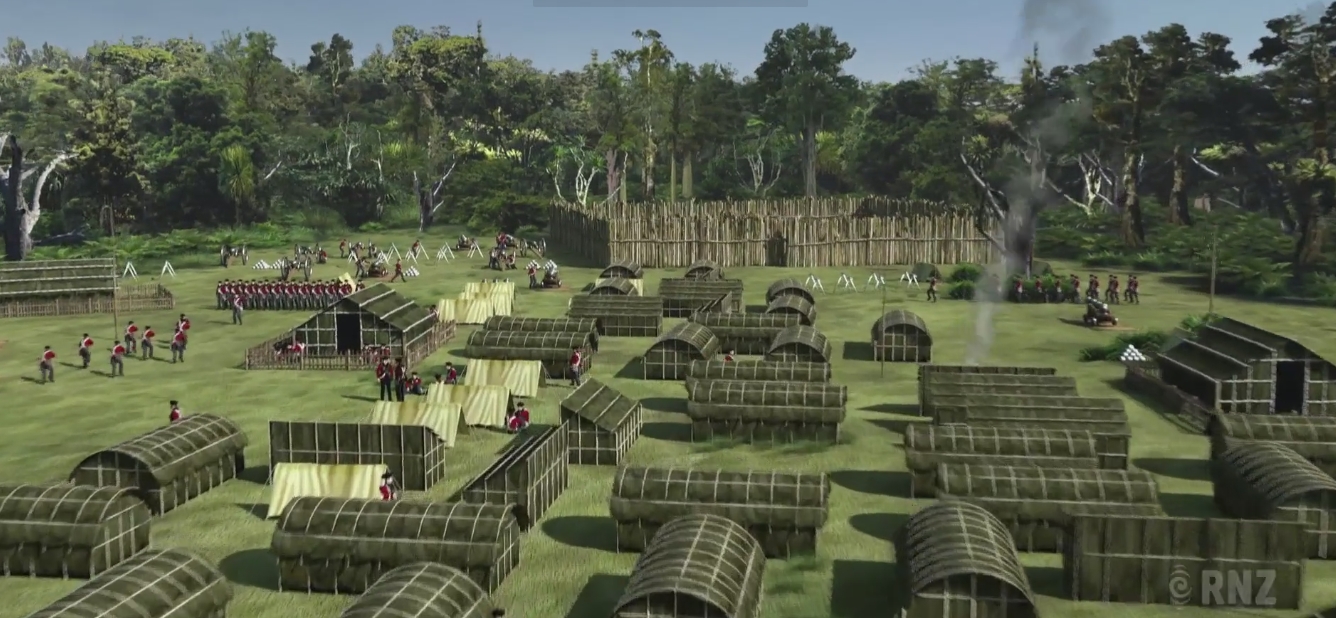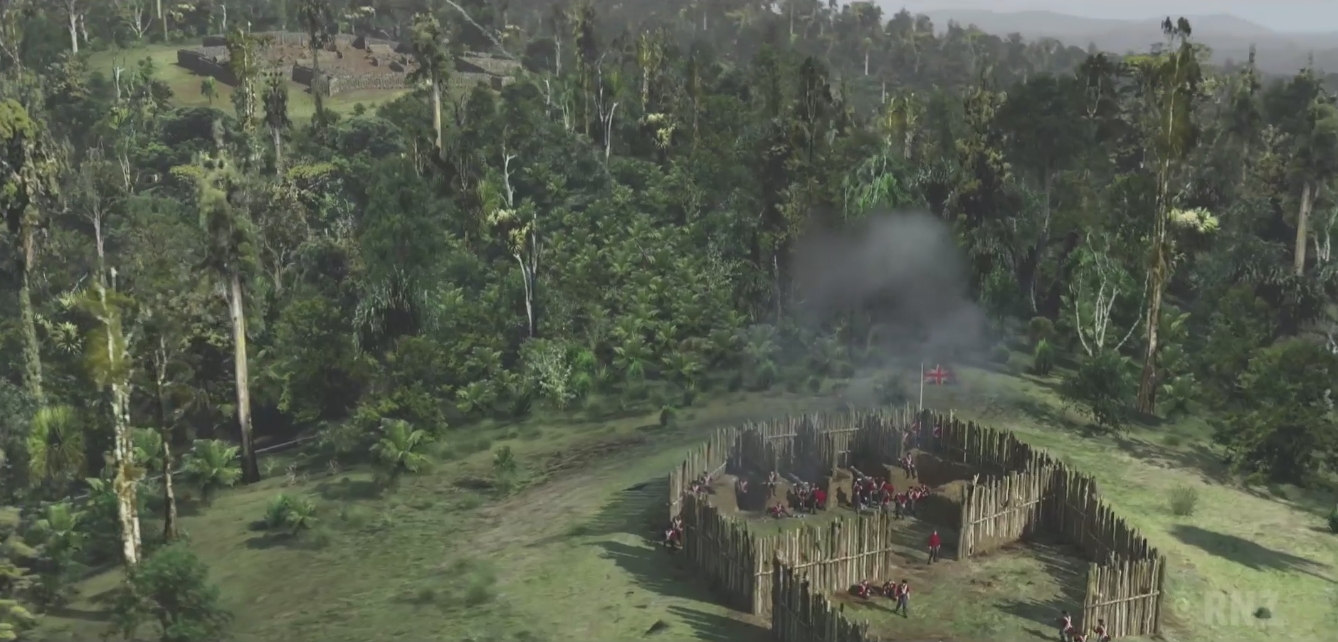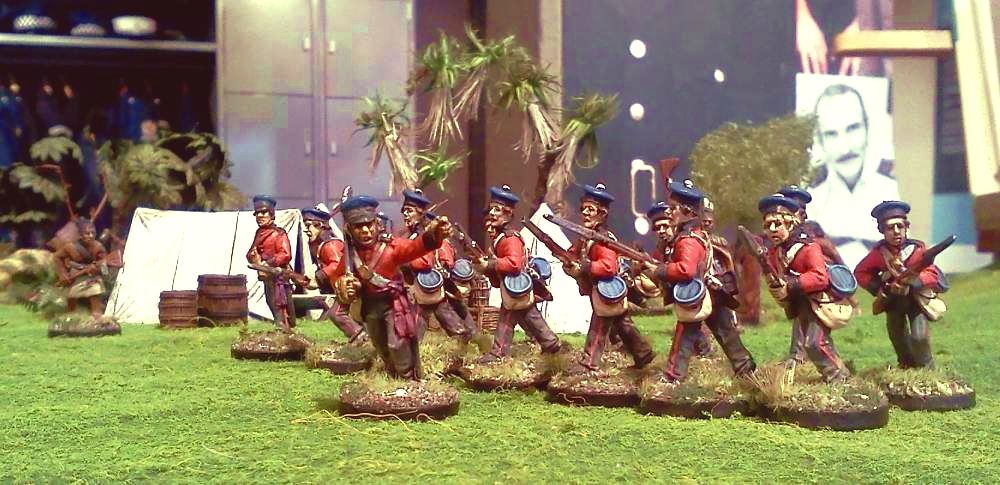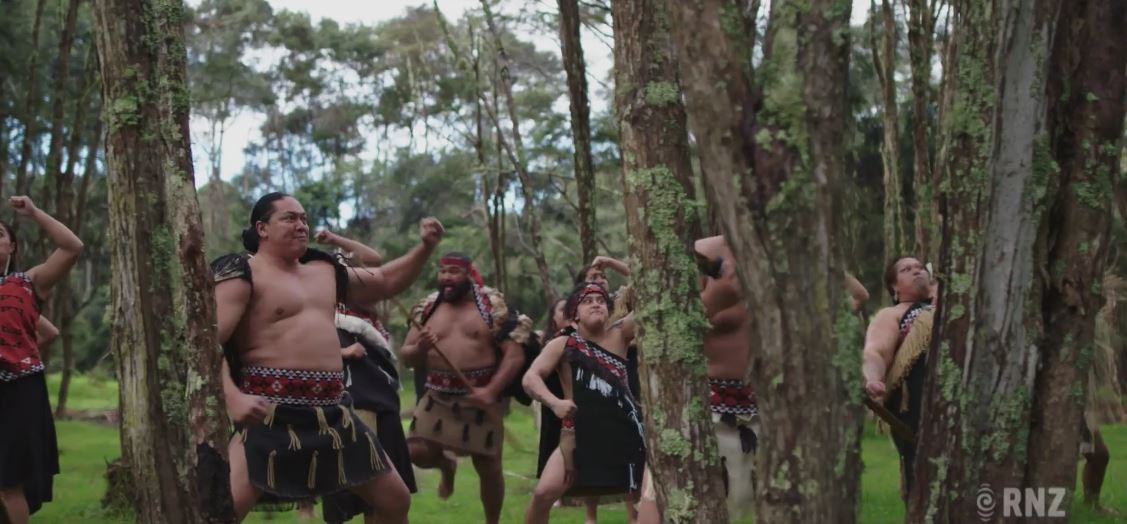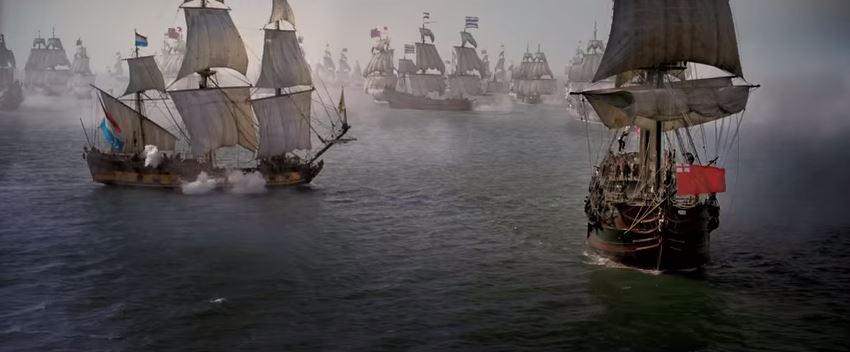
After a long gestation, the latest regiment of my imagi-nation, the Barryat of Lyndonia, has finally arrived. The Barryat doesn’t have its own army, but contracts foreign regiments to fight its battles (clever!).
Initially the Barryat’s contracted regiments were all ones that had appeared in the Stanley Kubrik film Barry Lyndon. But as all the main units from the movie have now been used up, the Barryat is now employing random real-life regiments such as this one, the British 8th (King’s) Regiment of Foot.

The real 8th Foot fought at a number of the more famous battles of the mid-18th century, including Dettingen (1743), Fontenoy (1745), Falkirk (1746), Culloden (1746), Rocoux (1746), and Lauffeldt (1747).
The figures are all from the range of superb 1/56th scale metal models produced by Crann Tara Miniatures, which are now owned by Caliver Books in the UK.

In fact, I’ve really got to praise Caliver Books for being able to complete this regiment. You may recall that I previously posted about painting the grenadiers of this regiment, and said I was awaiting the remainder of the figures to be shipped from the UK.
After they still hadn’t showed up by several weeks later, I contacted Caliver Books to check the date they posted the package. I wasn’t angling at getting replacements (truly!), but Dave Ryan immediately replied saying that consignments did occasionally get lost, and that he would resend the missing figures, which he promptly did at no further cost. Now that is excellent service! The 8th Foot and in fact the entire population of the Barryat of Lyndonia salute you, Dave!

The colours (flags) are by Flags of War. This is the first time I have used their paper flags, and I must say I was very impressed with them. The shading and highlighting gives the effect of the light shining through the cloth.
Two hints for using paper flags:
- Firstly, after gluing the two sides together, lightly crunch up the flag from the top corner by the finial down to the diagonally opposite bottom corner – this gives the effect of the weight of the flag dragging it slightly down, which you won’t achieve by just rolling the flag vertically as many people do.
- Secondly, always paint the edges of the flag to match the design, so as the cover up the unsightly white edges of the paper.

The 8th Foot carry two colours:
- King’s colour: Union flag, the centre decorated with the white horse of Hanover on a red field surrounded by a blue garter and surmounted by a gold crown; the motto “NEC ASPERA TERRENT” underneath; the regiment number “VIII” in roman gold numerals in the upper left corner.
- Regimental colour: blue field with its centre decorated with the regimental badge as per the king’s colour. The Union flag in the upper left corner with the regiment number “VIII” in roman gold numerals in its centre. The gold king’s cipher surmounted by a crown in the three other corners.

The drummers of the 8th Foot wore the royal livery of red cloth, lined, faced and lapelled on the breast with blue, and laced with the royal lace (golden braid with two thin purple central stripes).

By using deep bases (60mm) I can put my officers at the front, and the NCOs and drummers behind the line.
The figures were painted almost entirely with GW’s Contrast Paints. I love the way these paints flow, and how they automatically provide some basic shading and highlighting. These figures won’t ever be painting competition winners, but they look fine from normal viewing distance, especially en masse.

Speaking of ‘en masse’, this regiment is big by wargaming standards. There are 54 privates, 3 officers, 3 sergeants and 3 drummers, along with another 8 figures on the command stands, and of course the mounted colonel. A total of 72 figures!

Here’s a picture of how I have organised the regiment, loosely based on the battalions in the old wargaming book Charge! or How to Play Wargames.





